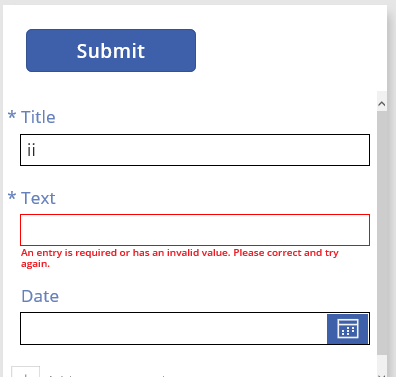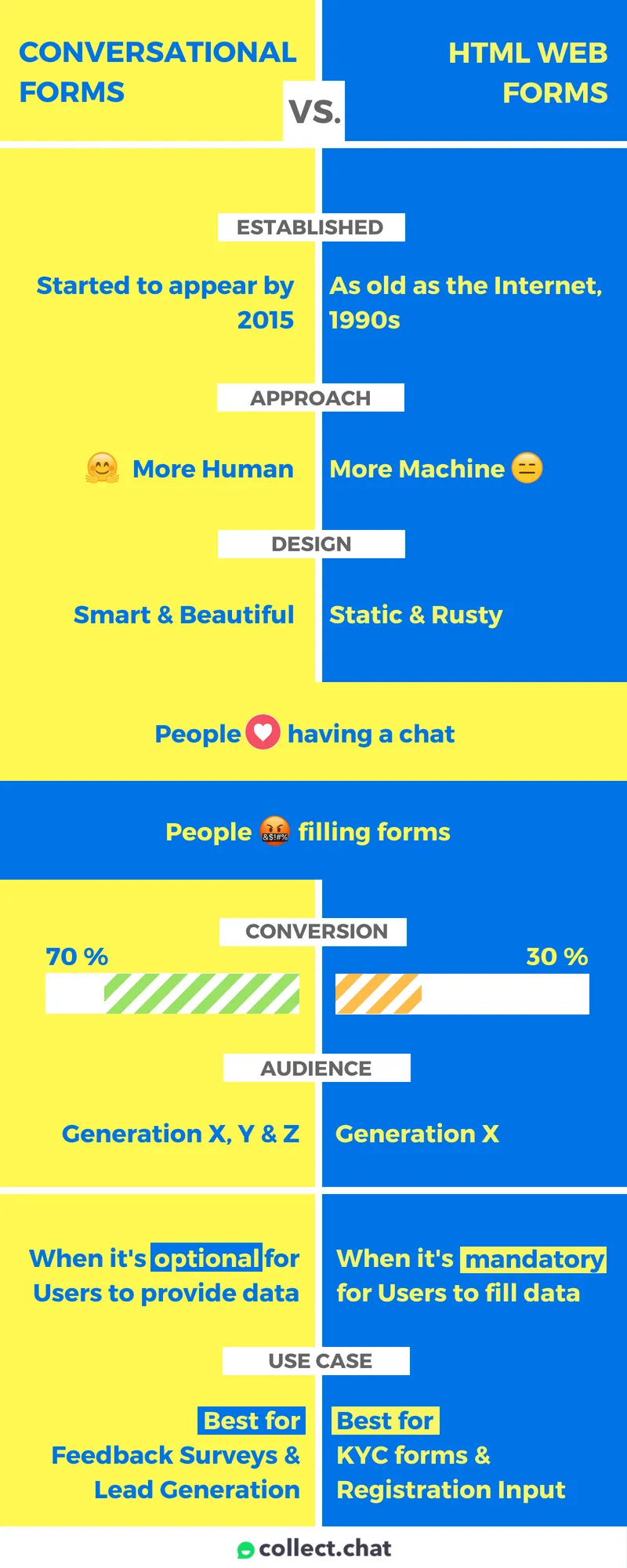There are few things businesses love, more than a chance to peek into their users’ minds. Whether that’s data on how somebody found your product or feedback on a feature, it is essential to have a dependable way to tap into information from customers.
The standard way to do that is by using a web form. “Web forms”, however, may not be the best way to do it anymore. The advent of chatbots has made collecting data on leads and feedback from customers a more sophisticated practice. “Conversation” comes naturally to humans, so it makes sense that interactions based on them should supplant the cold, transactional UX of web forms.
What is a Conversational Form
A conversational form is the same as what we like to call a functional chatbot or a rule-based chatbot. It is different from the AI chatbot in that matter that functional chatbots don’t have NLP or Machine Learning. That does not mean that they are not smart. Functional chatbots (hereinafter referred to as conversational forms) are menu-based. They take the user on a conversational journey based on a decision tree. These forms collect valuable data during this conversation journey.
So conversational forms and web forms are trying to do the same task of data collection but through different approaches. Here are a few reasons why conversational forms are a better way to funnel leads and interact with customers online.
Create Trust Through Conversation
The point of any form is to ask users for information, some of which they may consider sensitive or personal. It is the kind of interaction for which trust is a prerequisite. In such a scenario, the form interface looks like a quick data grab. If forms could talk, they would say, “Give me all your information, NOW!”
If forms could talk–well, conversational forms can talk! Employing them on your website or app makes your brand seem more human. Conversational forms can be designed to preface questions with background information and respond to answers appropriately. This inspires the kind of trust it takes to get users to provide the data you need from them, which is essential no matter what kind of business you run.
CAPTCHA Be Gone
Does anybody enjoy filling out a CAPTCHA? They’re almost always impossible to read, the audio versions are no help, and the mobile interfaces are horrible. It might be necessary for your business to prevent spam coming through feedback forms, but burdening your users with CAPTCHA fields is no way to do it.
The advantage of using a conversational form is that there is no need for separate spam prevention measures. The fact that whoever is on the other side is able to navigate the conversational interactions is enough to prove their humanity–at least for now. That way you keep spam out of your campaigns, and your users don’t have to endure the CAPTCHA hell.
Provide Decision Support, Not Blank Fields

Anyone who has ever filled out a form on the Internet has had this experience – You start filling out a long piece of digital paperwork painstakingly field by field. Each field has only a label and some placeholder text to provide direction. Ten minutes later, you hit “Submit.” Nothing happens. You then scroll up to find out that there are a bunch of errors that need to be corrected before the form will go through. ARGH!
Now consider the conversational form. Each question or interaction can come with decision support in the form of options and rich media descriptions. Your customers answer only one question at a time, and the answers are validated at each step. They never have to go back a few questions to correct mistakes or enter additional data. The result is happier visitors who never leave your feedback or data collection forms in a huff.
Smarter Data and Feedback Collection
Okay, we might be giving forms too much of a hard time. There are instances where they are useful, like for grant applications and tax filings. Those are use cases in which the same information is required from everyone who will use the form.
That’s not true of your online business. There will be scenarios where you may want to ask different subsets of users different questions based on their specific preferences or behaviours. Conversational forms let you use conditional sequences to do just that. You can also have specifics calls to action based on responses to answers. This transforms your data collection efforts into a powerful way to segment users and target offerings.
User Experience of the Future
Forms are the crocodiles of the Internet. Their UX has remained unchanged since the Jurassic age of the WWW, making them anachronisms in the era of conversational interfaces and AI.
Businesses are turning to chatbots for both the functional and aesthetic advantages they bring. From a user experience perspective, they’re significantly more engaging than standard web forms. They also provide cross-platform integration, so you can combine data from forms sent out across email, Web, and externally embedded widgets.
To Summarise

Start making your conversational form today. You can use it as a widget, share it anywhere and even embed it inside a page or a blog, like the one below.







